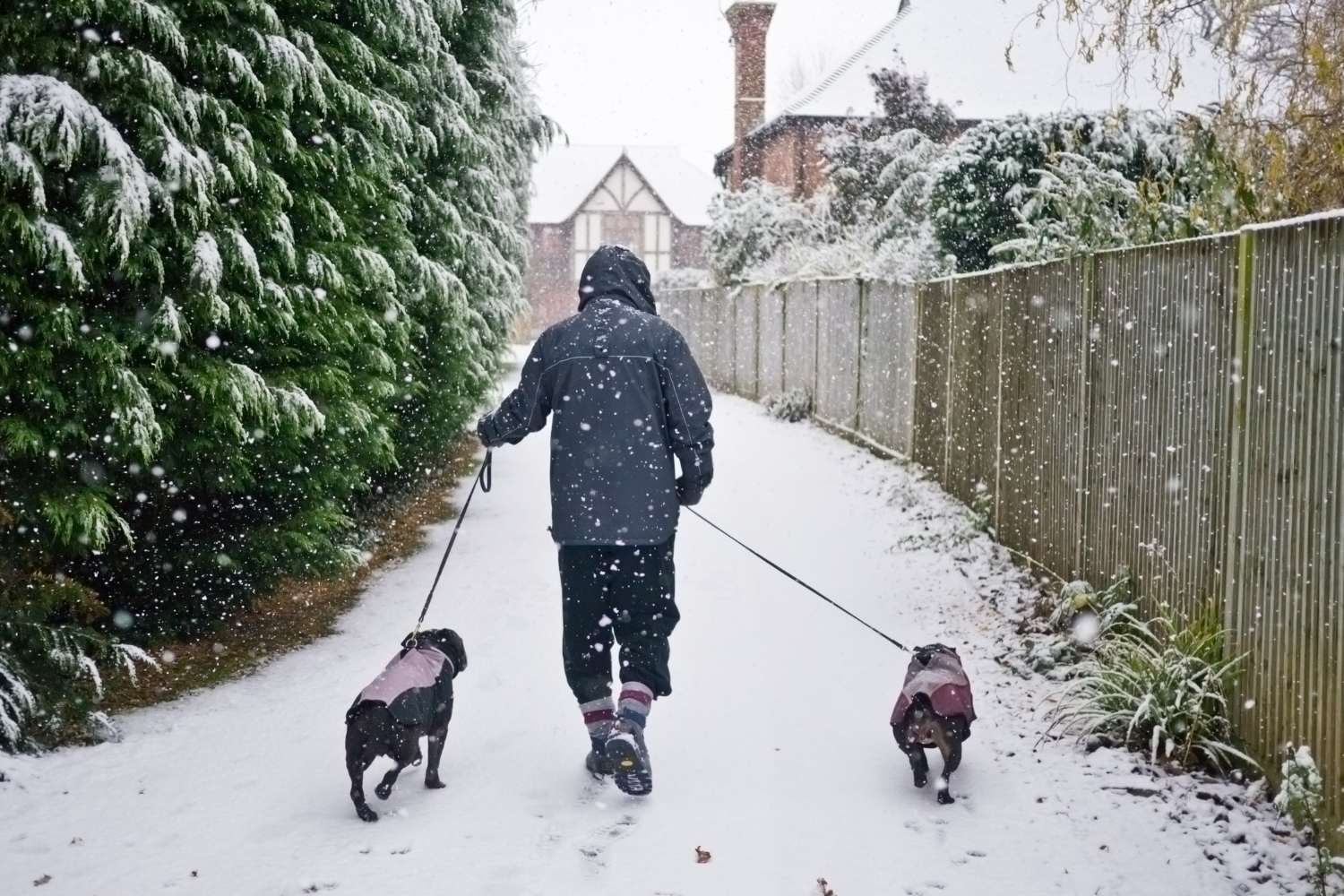Winter weather can be rough on all of us, including our furry friends. As cold temperatures set in, make sure to keep your pet’s safety and health top of mind. Follow these tips to keep your pets comfortable and healthy during colder months.
Know Your Pet’s Limits
Your pet’s tolerance for cold can vary drastically based on a variety of factors. Adjust your pet’s outdoor activities accordingly, taking into consideration things like coat thickness, body fat, age, arthritis, and other health conditions.
Provide Comfortable Choices
Just like people, pets prefer comfortable sleeping places. Offer your pets safe and warm options, allowing them to choose their sleeping locations based on their need for warmth. While it’s recommended to keep pets indoors, if this isn’t possible, provide a warm, windproof shelter with access to fresh, non-frozen water. Avoid space heaters and heat lamps, and use heated pet mats cautiously.
Make Noise Around Vehicles
Outdoor cats may seek warmth under vehicle hoods, posing a danger when the engine starts. Before starting your car, check underneath, bang on the hood, and honk the horn to prevent potential harm to hidden feline companions.
Dress for the Weather
For dogs with short coats or those bothered by cold weather, consider using sweaters or coats. Ensure they are dry before each outdoor excursion, as wet clothing can make your pet colder. Some owners also opt for booties to shield their dog’s feet.
Check and Protect Paws
Frequently inspect your dog’s paws for signs of cold-weather injury, such as cracked or bleeding paw pads. Consider using booties to protect their feet, and trim the hair between the toes to minimize ice accumulation. After walks, clean your pet’s feet, legs, and belly to remove packed snow and any de-icing chemicals that your pet may have come in contact with.
Prevent Poisoning
The sweet taste of antifreeze is attractive to dogs, but even small amounts can be deadly. Promptly clean up spills and keep pets away from areas where these products are stored. Consider using pet-safe alternatives on your property.
Avoid Cold Cars
Cold cars can be as dangerous as hot ones for pets. Limit unnecessary car travel, and never leave your pet unattended in a cold vehicle, especially if they are young, old, ill, or thin.
Pet-Proof Your Home
As pets spend more time indoors, pet-proof your home by using space heaters cautiously and checking the furnace’s efficiency. Install carbon monoxide detectors, especially if you have a pet bird.
Avoid Frozen Water
When walking your dog near frozen ponds or lakes, keep them on leash. The ice may not support your dog’s weight, posing a risk to both your pet and yourself if a rescue attempt is needed. If your home has a swimming pool, make sure it is covered, drained, or fenced off to prevent pets from accidentally falling in.
Recognize Signs of Cold Stress
If your pet shows signs of hypothermia or frostbite, such as whining, shivering, weakness, or seeking warmth, bring them indoors immediately. Frostbite can be especially hard to identify, but typically occurs on paw pads, tails, and ears. If you think your pet might be showing signs of hypothermia or frostbite, consult your veterinarian immediately.
Be Prepared for Emergencies
Prepare an emergency kit for your pet, including essential supplies like food, water, and medication. Plan for at least five days’ worth of provisions in case of severe winter weather, blizzards, or power outages.
Danielle Works is the Community Engagement Manager for RedRover. With more than 10 years of experience in animal welfare, Danielle consults with shelters throughout the country to identify collaborative solutions for pets and owners in crisis. She holds a Bachelor’s degree in Biology from Willamette University in Salem, Oregon.



